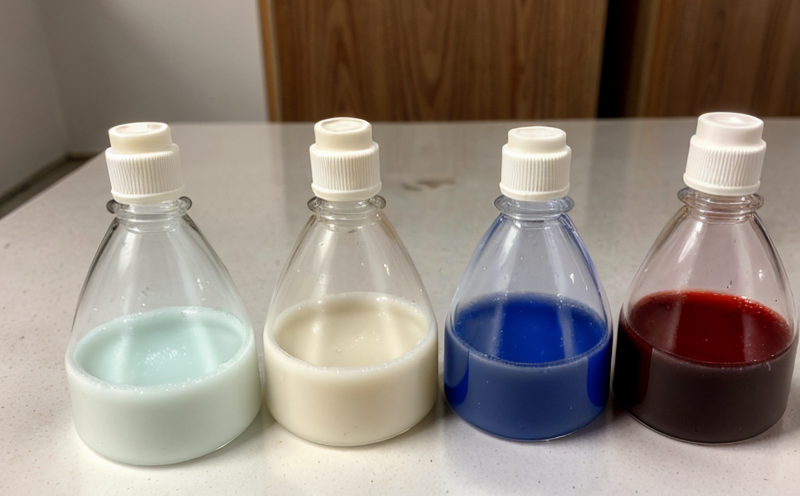ASTM D3437 Monomer and Oligomer Residue Testing in Resins
The ASTM D3437 standard is widely recognized as an essential tool for ensuring the purity of resins used in various industries, including adhesives, coatings, plastics, and composite materials. The primary objective of this test is to quantify the presence of monomers and oligomers that may have escaped polymerization during the manufacturing process. Such residues can significantly impact product performance, regulatory compliance, and environmental sustainability.
Monomers are reactive compounds used in the production of resins through polymerization reactions. Oligomers are low-molecular-weight polymers resulting from incomplete polymerization processes. The presence of these residues in finished products can lead to reduced quality, increased volatility, or even adverse health effects if not controlled properly.
The ASTM D3437 test method involves several key steps: - Sample Preparation: Resin samples are taken and prepared according to the specified ASTM guidelines. This may include grinding, sieving, or dissolving in a suitable solvent. - Extraction: Extractants are used to dissolve monomers and oligomers from the resin sample. The choice of extractant depends on the specific chemical components being targeted. - Analytical Techniques: Once extracted, the samples undergo analytical testing using gas chromatography (GC), high-performance liquid chromatography (HPLC), or Fourier transform infrared spectroscopy (FTIR). These techniques provide precise quantification and identification of monomer and oligomer residues.
The importance of ASTM D3437 cannot be overstated. It helps manufacturers maintain product consistency, enhance quality control, and ensure compliance with international standards such as ISO 9001 for quality management systems or REACH regulations regarding chemicals in consumer products.
By adhering to this test method, companies can minimize risks associated with residual monomers and oligomers, thereby protecting both their reputation and the environment. This service is particularly valuable for industries where product purity is critical, such as pharmaceuticals, electronics, and automotive manufacturing.
Scope and Methodology
| Step | Description |
|---|---|
| Sample Preparation: | Grinding, sieving, or dissolving in a suitable solvent as per ASTM D3437 guidelines. |
| Extraction: | Use of appropriate extractants to dissolve monomers and oligomers from the resin sample. |
| Analytical Techniques: | Gas chromatography (GC), high-performance liquid chromatography (HPLC), or Fourier transform infrared spectroscopy (FTIR). |
| Acceptance Criteria: | Residue levels must not exceed specified limits as per ASTM D3437. |
The ASTM D3437 test ensures that the resin products meet stringent quality and safety standards. By adhering to this method, manufacturers can produce consistent and reliable products that comply with international regulations. This service is especially beneficial for companies involved in high-stakes industries where product purity is paramount.
Why Choose This Test
Selecting ASTM D3437 monomer and oligomer residue testing can provide numerous benefits to your organization. Firstly, it enhances the overall quality of your resin products by ensuring that all monomers and oligomers have been completely polymerized during production. Secondly, this test helps you comply with stringent industry standards such as ISO 9001 for quality management systems or REACH regulations regarding chemicals in consumer products.
Thirdly, by using ASTM D3437, you can avoid potential legal and financial risks associated with non-compliance. Many industries have strict regulations governing the presence of monomers and oligomers in their final products. Failing to meet these requirements could result in costly fines or even product recalls. Fourthly, this testing method allows for continuous improvement by providing detailed insights into production processes that may need adjustment.
Finally, adopting ASTM D3437 ensures a safer work environment for employees and consumers alike. Monomers and oligomers can pose significant health risks if not controlled properly. By ensuring these residues are minimized or eliminated entirely through rigorous testing, you contribute to the safety of those who handle your products.
Competitive Advantage and Market Impact
The ASTM D3437 monomer and oligomer residue test offers a competitive edge in several ways. It provides an accurate assessment of product purity, which is crucial for maintaining customer trust and satisfaction. In today’s market, where consumers are increasingly demanding eco-friendly and safe products, ensuring that your resin meets the highest standards can be a deciding factor between competing brands.
Compliance with ASTM D3437 also opens up new market opportunities by allowing you to enter regions with stringent regulatory requirements. Many countries have implemented regulations requiring manufacturers to demonstrate compliance with international standards like REACH or ISO 9001. By offering products that meet these criteria, you can tap into these markets without fear of non-compliance penalties.
In addition, this testing method supports ongoing product development and innovation. Continuous monitoring allows for the identification of potential issues early on, enabling timely corrective actions. This proactive approach not only improves product quality but also fosters a culture of excellence within your organization.
Moreover, adopting ASTM D3437 demonstrates your commitment to sustainability and responsible manufacturing practices. In an era where environmental consciousness is growing, companies that prioritize these values are more likely to attract environmentally conscious consumers and investors alike.





